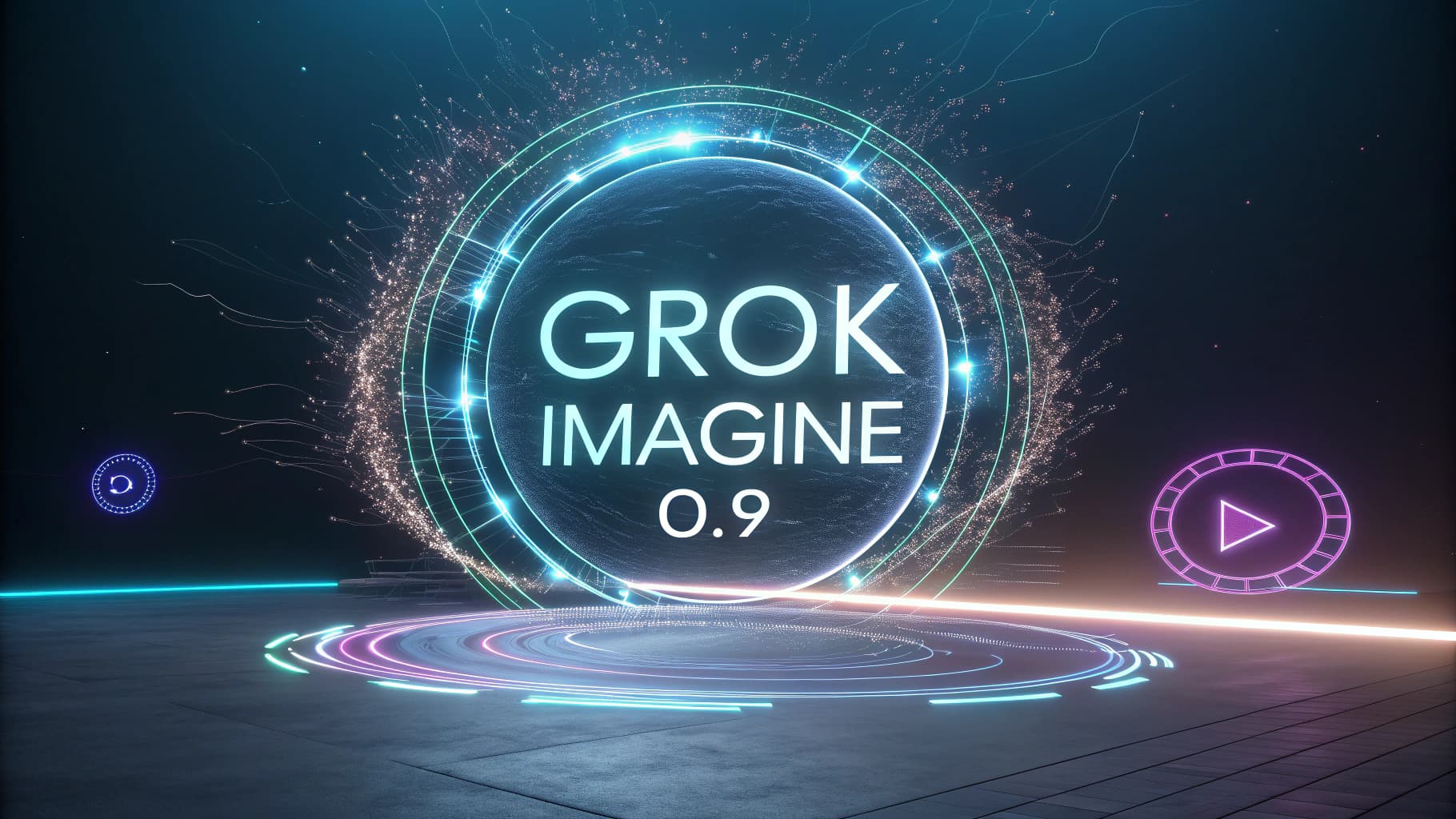
Grok Imagine 0.9 Review: Does xAI’s Bet on Speed Pay Off?
On October 5, 2025, Elon Musk’s xAI officially entered the fiercely competitive AI video generation arena with the launch of Grok Imagine 0.9. This release wasn’t just another entry into the market; it introduced a different philosophy, prioritizing unprecedented speed and efficiency over the pursuit of flawless visual fidelity that defines its rivals.
This strategic pivot raises a critical question: In a race dominated by visual perfection, is being the fastest a winning strategy or a compromise on quality?
The Tech Behind the Speed: The Aurora Engine
The innovation powering Grok Imagine 0.9 is its proprietary “Aurora Engine.” Unlike many competing models that rely on sequential processing, analysis suggests Aurora utilizes a multimodal architecture that processes text, visual, and audio data simultaneously. This approach yields two significant advantages:
Record-Breaking Speed: By eliminating separate processing pipelines, the tool can generate video clips in under 15 seconds-a speed that is 2x to 4x faster than its closest competitors. This is a game-changer for creators needing to iterate and produce content at a rapid pace.
Native Audio Sync: Because audio is generated in tandem with the visuals, the sound effects and ambient tones are naturally synchronized with the on-screen action. This avoids the disjointed feel sometimes present in models that add audio as a post-processing step.
Performance Analysis: Strengths and Challenges
A hands-on evaluation of Grok Imagine 0.9 reveals a clear picture of its capabilities and limitations.
Where It Shines:
Production Efficiency: The tool’s incredible speed makes it ideal for high-volume content creation, such as short-form videos for social media platforms or producing multiple ad variations for A/B testing.
Accessibility: By integrating directly into the X (formerly Twitter) platform, Grok Imagine is instantly accessible to millions of users without requiring specialized software, democratizing video creation.
Prompt Adherence: For clear, concise prompts focused on a single subject, the tool demonstrates a strong ability to accurately interpret and execute user commands.
Where It Falters:
Visual Fidelity: While the output quality is impressive, it doesn’t quite reach the hyper-realism and cinematic polish offered by industry benchmarks like OpenAI’s Sora. In scenes with complex physics or intricate details, visual artifacts can emerge, breaking the illusion of reality.
Handling Complexity: The model performs best with simplicity. As prompts become more complex with multiple subjects, dynamic movements, and detailed environments, it struggles to maintain consistency and quality throughout the video clip.
Market Positioning: A Strategic Alternative, Not a Direct Rival
Grok Imagine 0.9 is not trying to be a “Sora-killer.” Instead, it carves out its own niche by targeting a different user base.
For Competitors like Sora and Google Veo: These models are the gold standard for cinematic quality. They are the preferred choice for filmmakers, visual artists, and projects where visual perfection is non-negotiable.
For Grok Imagine 0.9: This tool is built for marketers, social media managers, and developers who value rapid prototyping and efficiency over pixel-perfect rendering. It’s a tool for getting ideas visualized quickly, not for final, polished productions.
The Verdict
In conclusion, Grok Imagine 0.9 is a strategic and intelligent addition to the AI landscape. It successfully proves that speed can be a decisive competitive advantage. While it may not win the award for the most visually stunning AI generator today, it unequivocally wins the race for the fastest. For any user who needs to turn an idea into a video in seconds, not minutes, this tool represents a truly significant leap forward.




